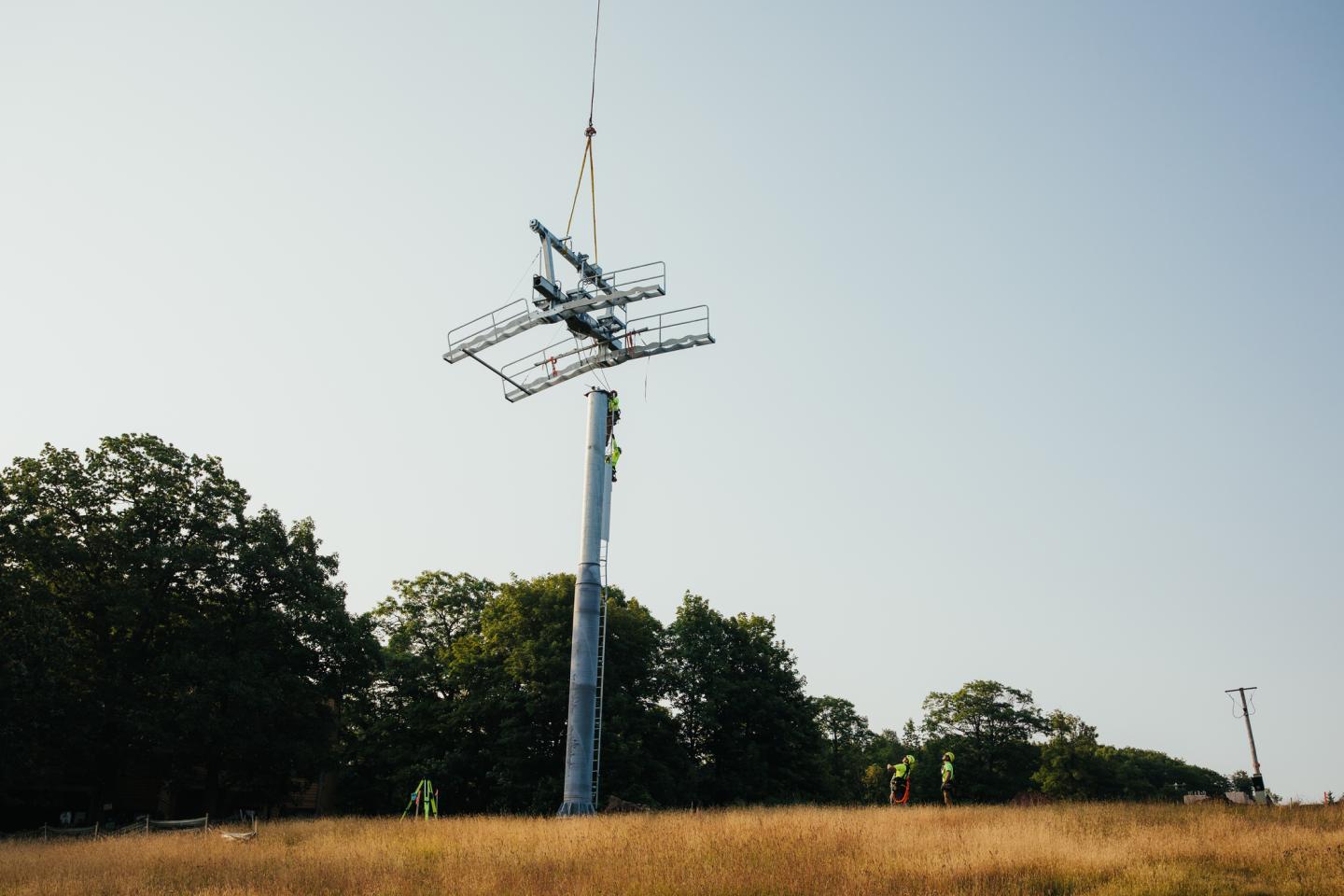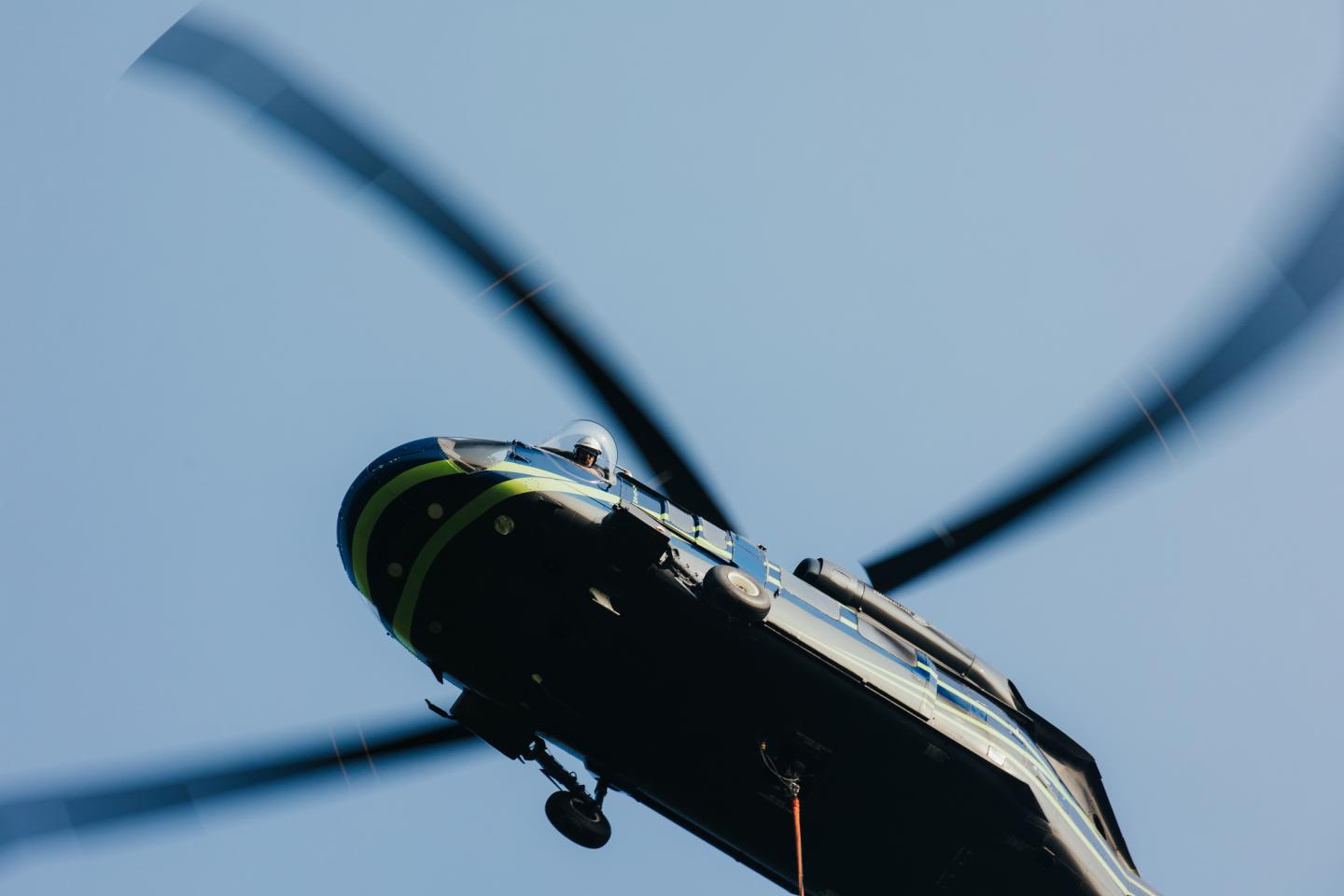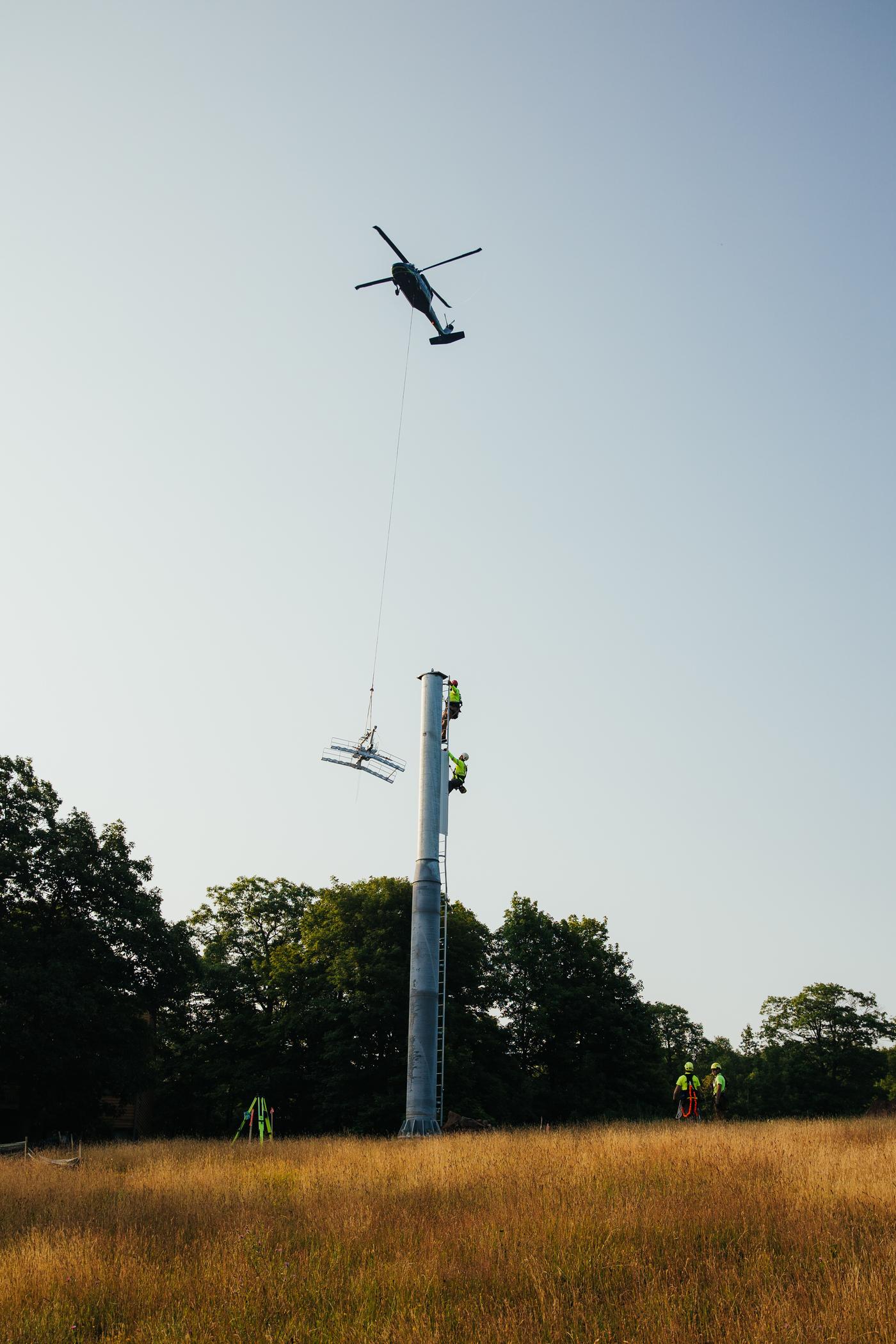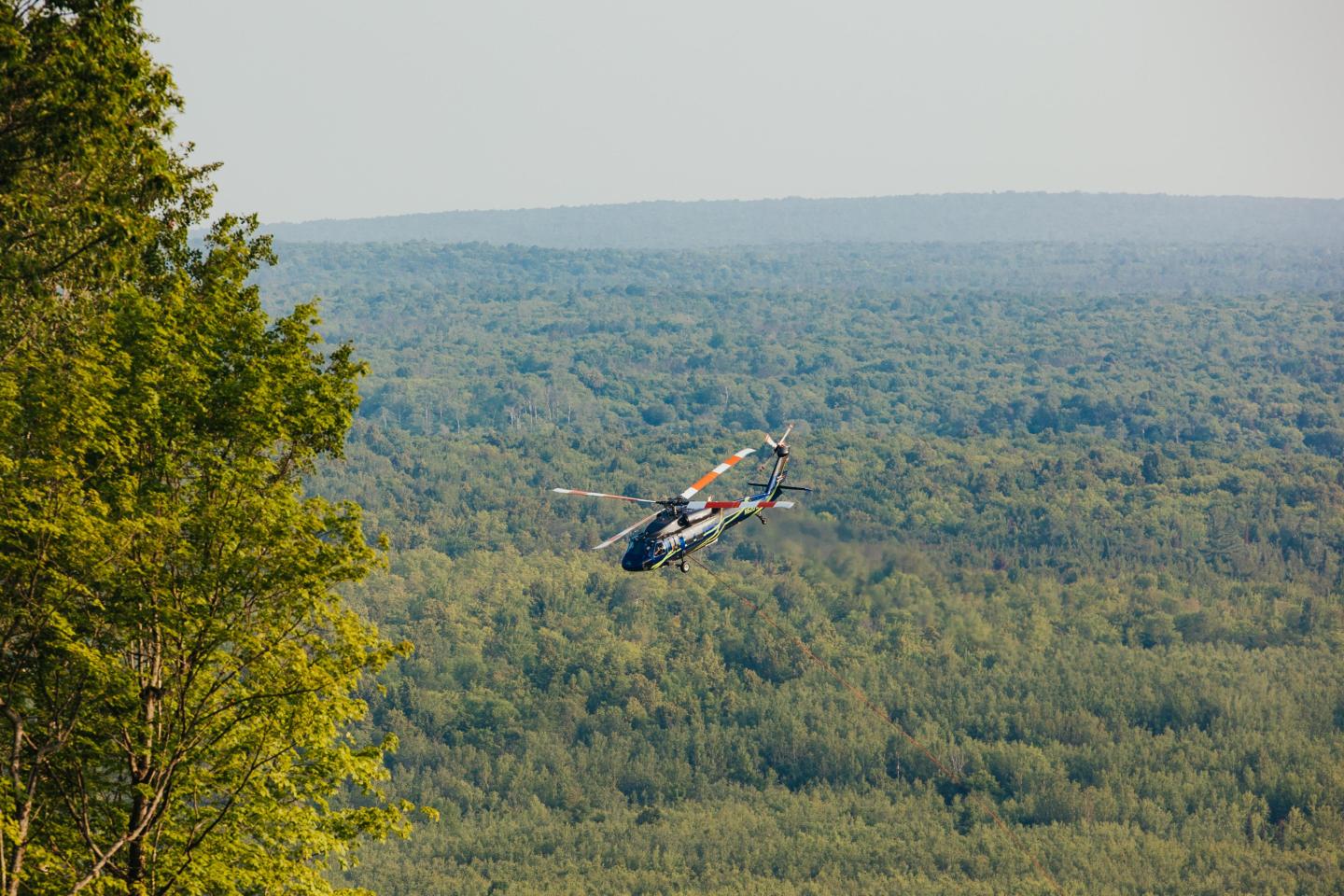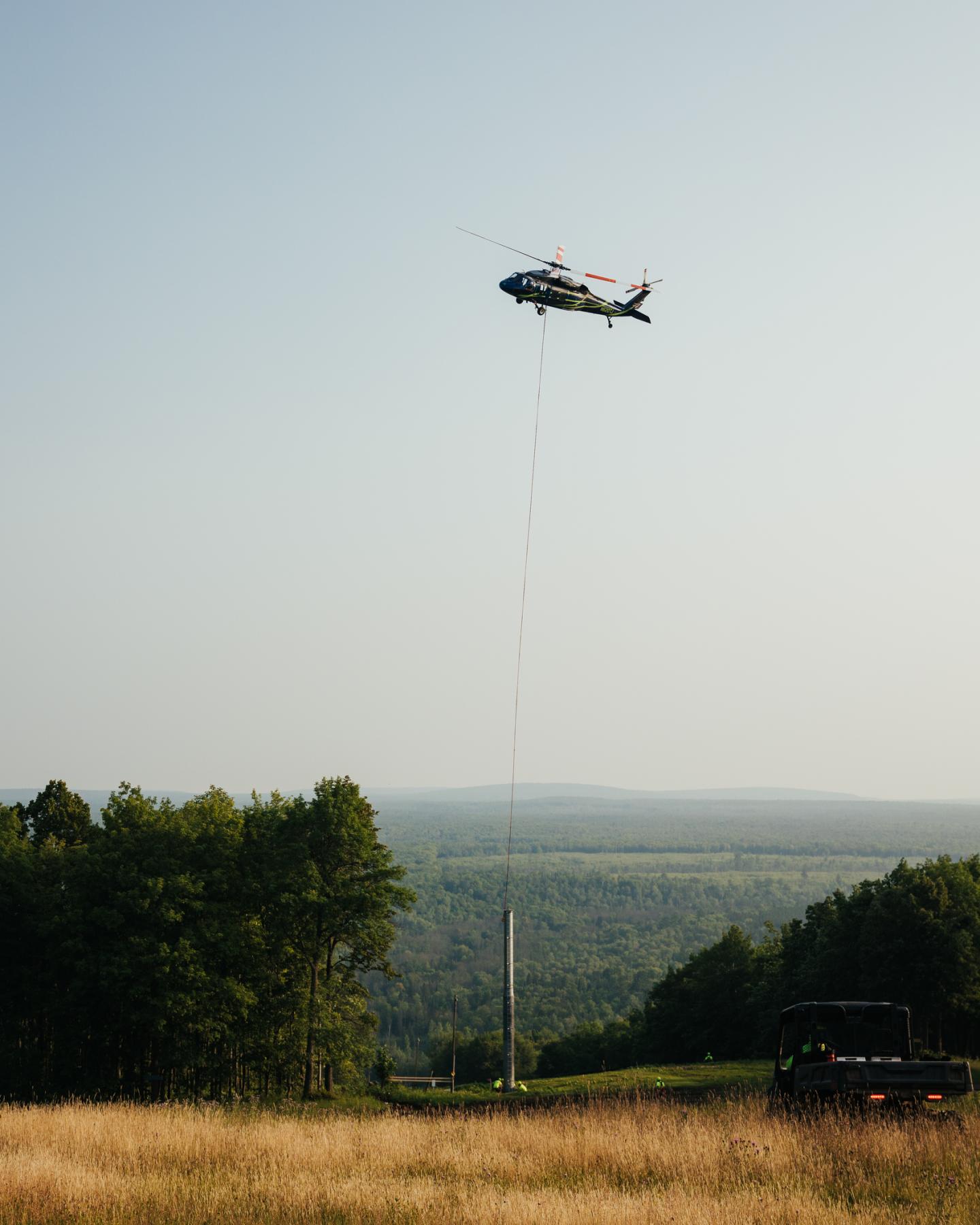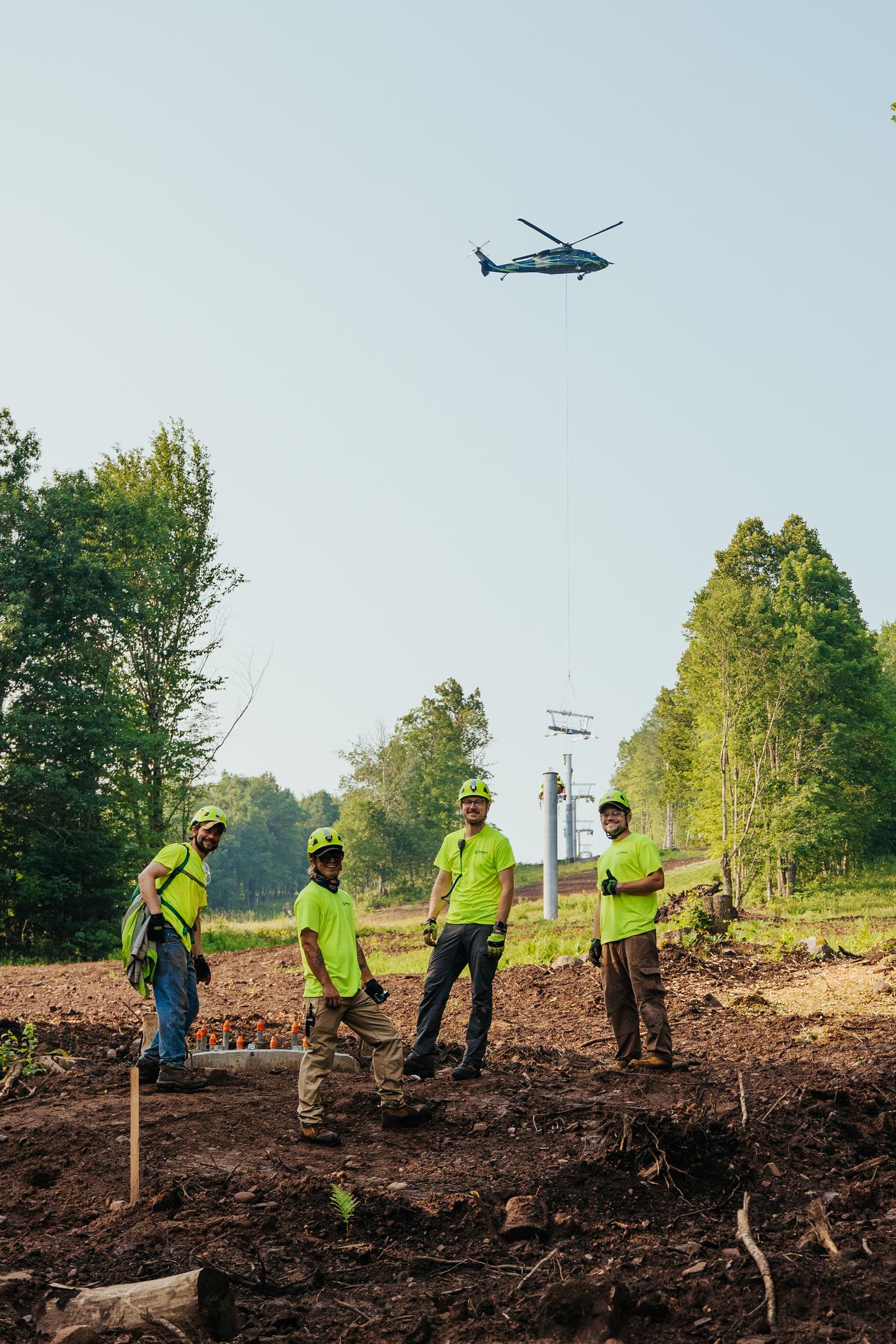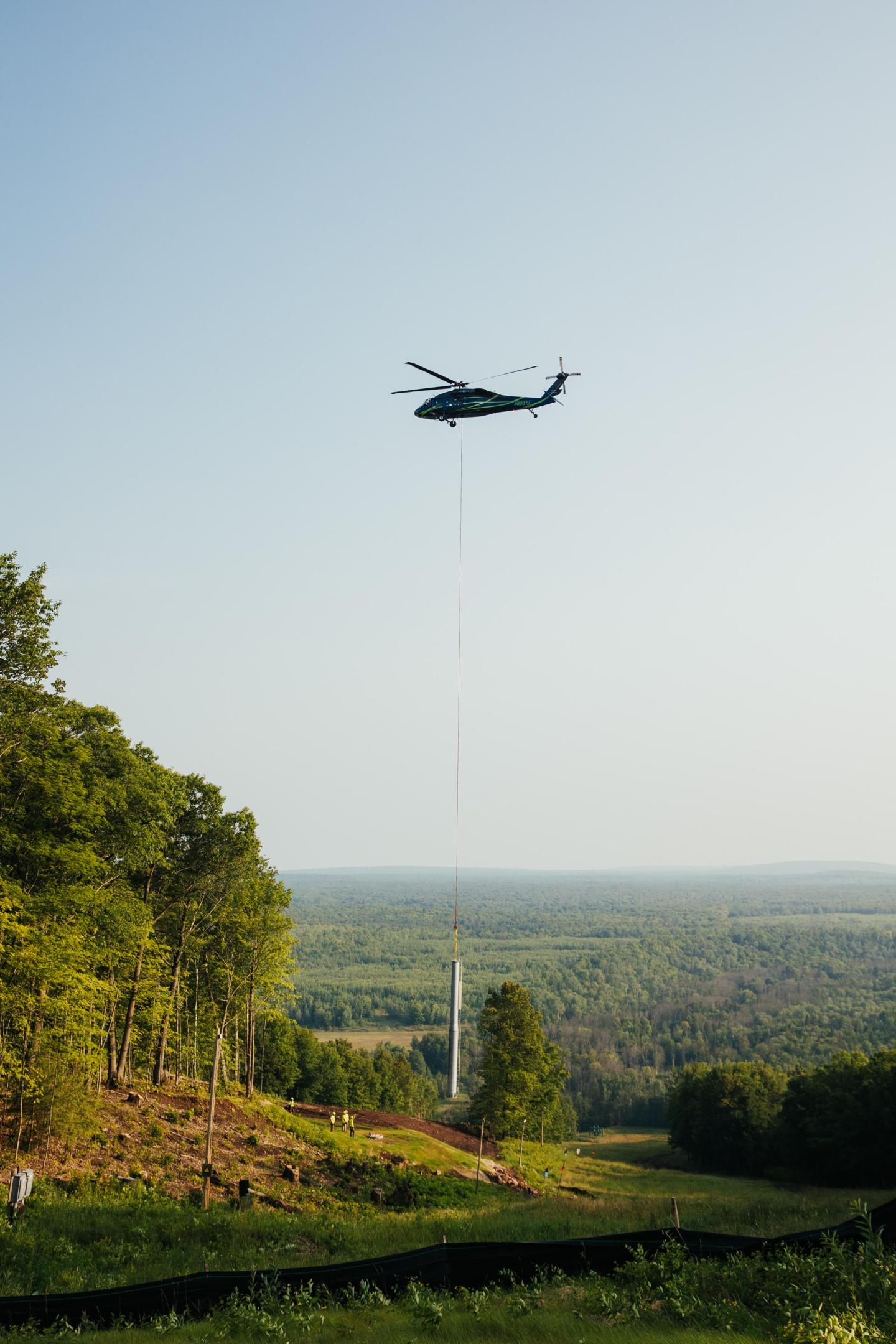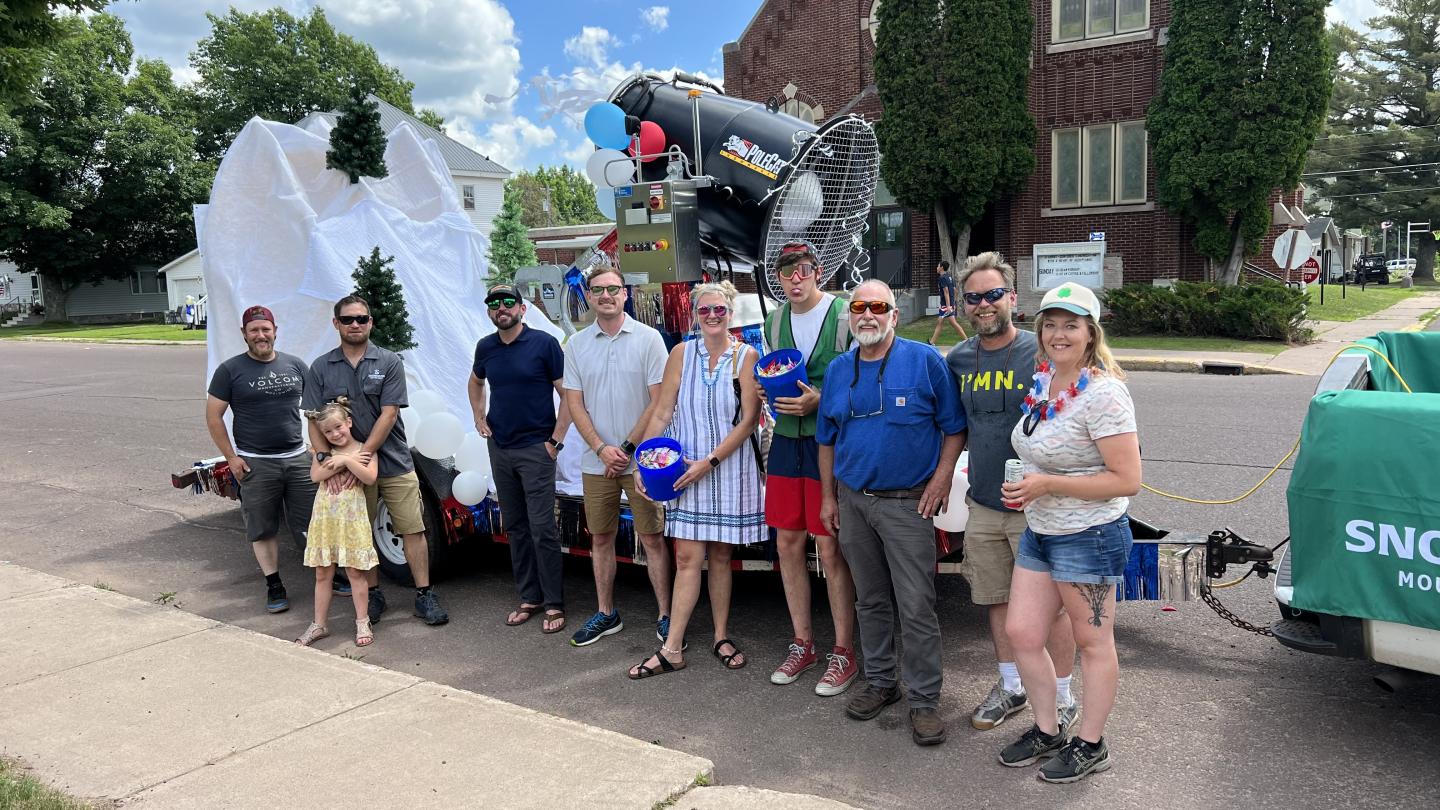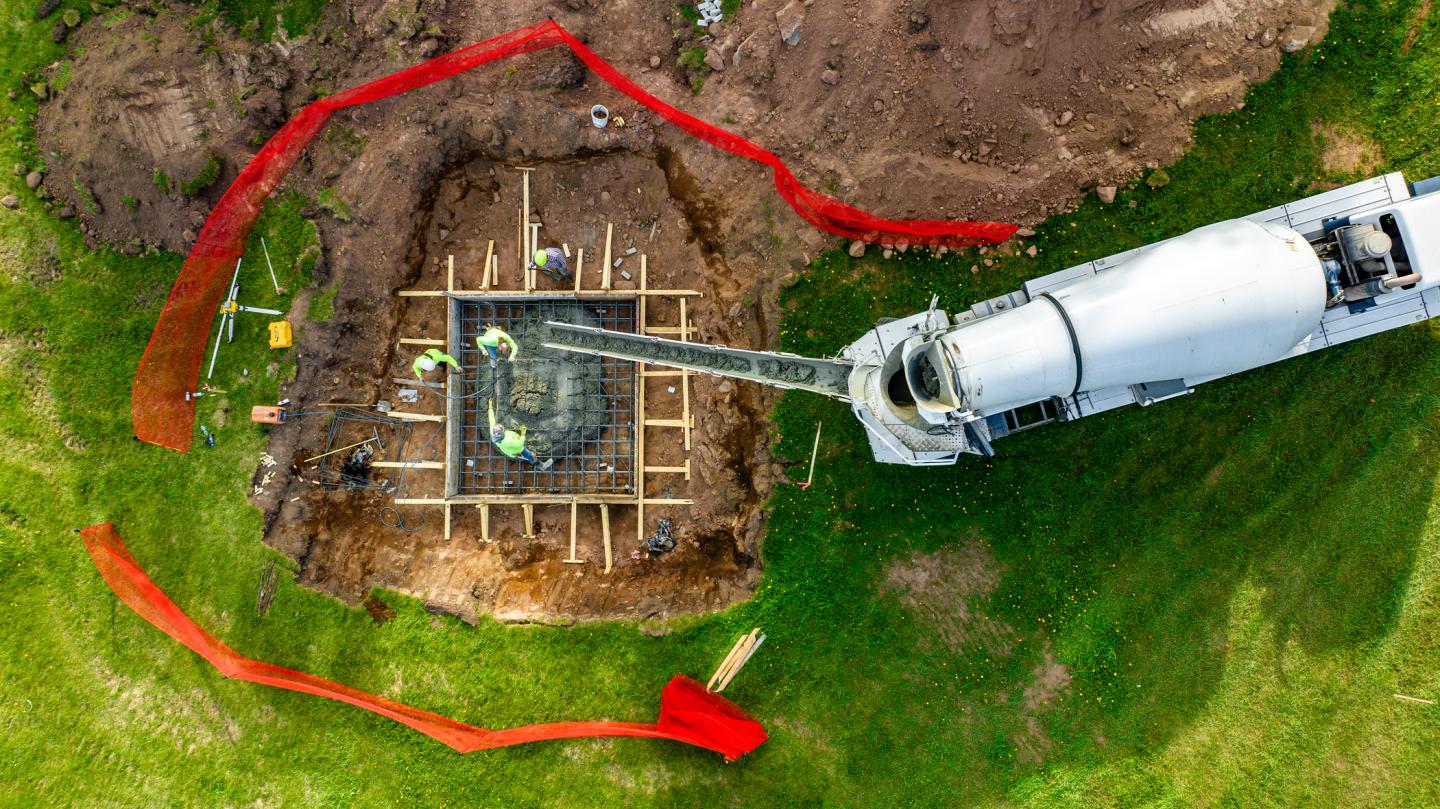Excitement In The Air
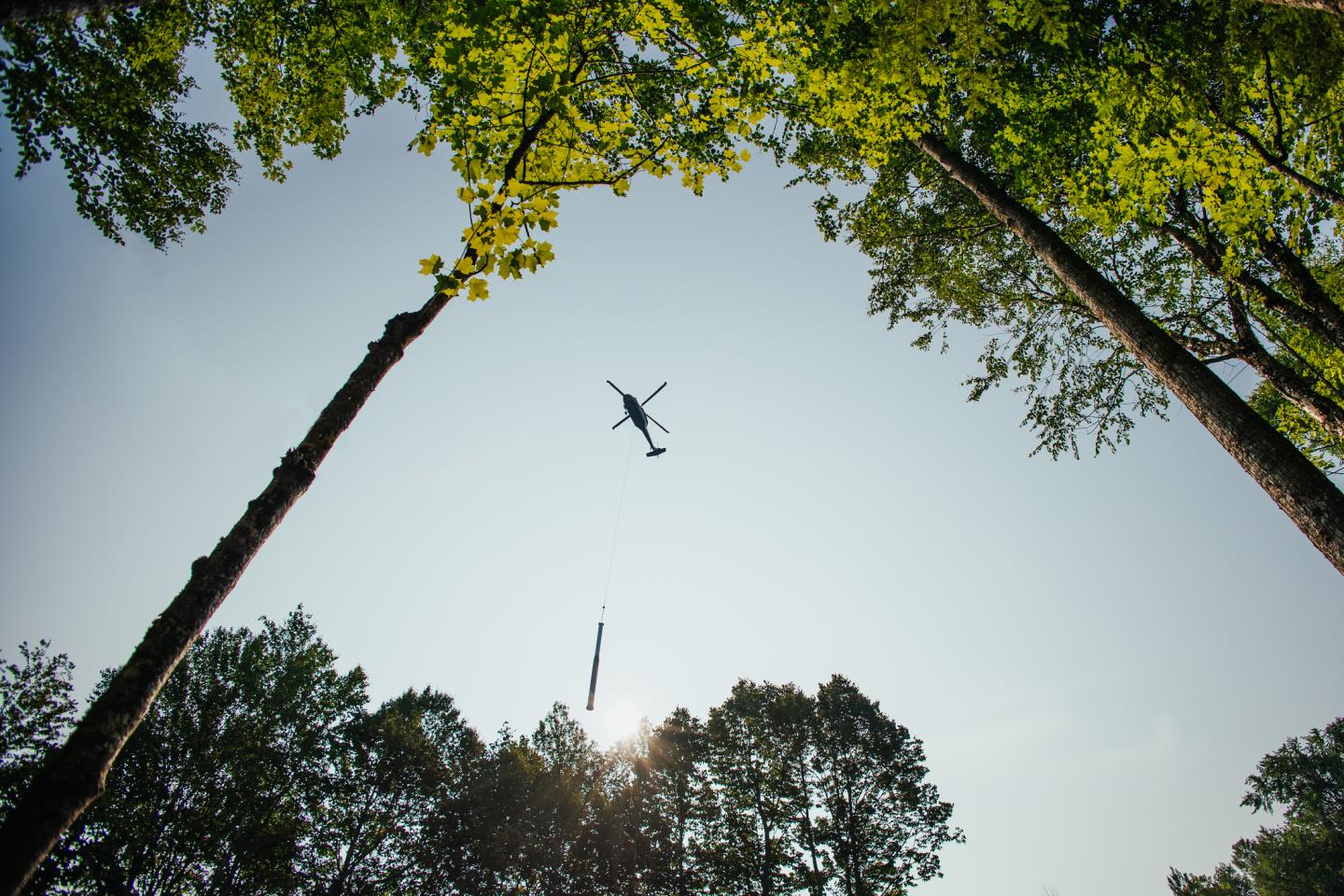
After months of work by countless individuals, the time finally came to get the new towers out of the parking lot and stand them up on their foundations. We considered using a conventional crane to lift the towers into place, but the steep terrain would have made it very difficult to move the towers into position and extensive excavation and dozing would have been required to build a crane pad at each tower site. Being that Lutsen is building a lift this summer as well, we choose to partner to split the cost of mobilizing a helicopter from out west to make things a little more efficient for both of us. Read on to learn the installation process.
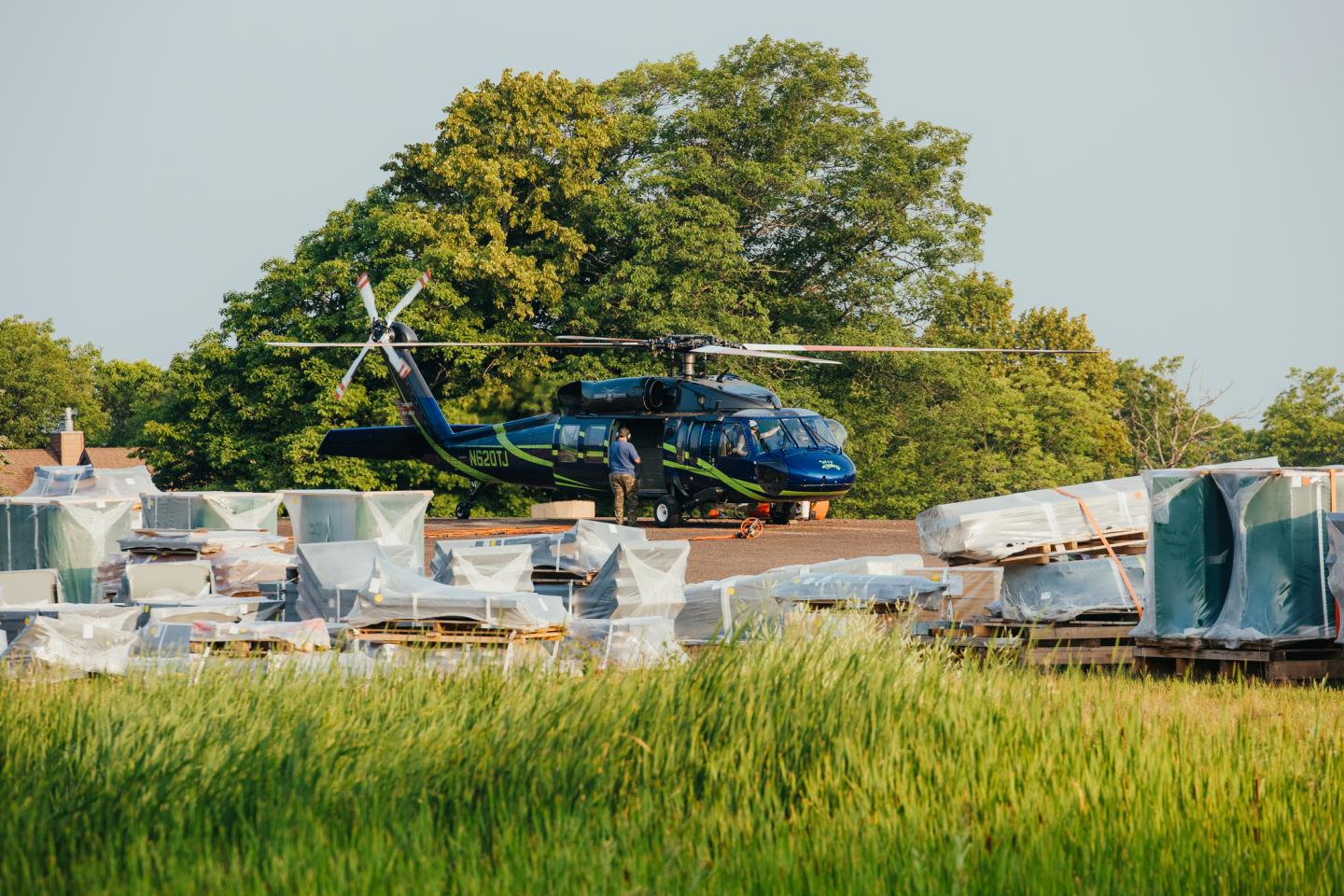
The Big Day
Saturday, July 22nd, after assisting our friends across the lake with pouring concrete for the new Raptor Express, Brian from Timberline Helicopters pointed his UH 60 Blackhawk across the lake and headed straight for Snowriver. He and his crew touched down here in the main parking lot just after the storm clouds cleared, making for a perfect dust-free landing.
Going to bed that night reminded me of what it was like as a kid to try to sleep knowing Santa was on his way with presents for Christmas Morning. I awoke before sunrise on Sunday, filled with excitement and nervous anticipation of the day ahead. The team arrived at six to make final preparations and conduct a safety meeting with the pilot. You could sense the apprehension as the entire team hung on every word of the pilot's instructions. Having installed 90% of the modern lifts in the American West, Brian was impossibly relaxed and quickly wrapped up his directions with a chipper, "Let's build a lift." At 7:05, the turbine engine slowly spun to life and we all knew the race was on.
Everyone on the team had a predetermined job to do. Brandon and Lee were our yard crew, responsible for connecting the rigging to the helicopter's line. Andrew, Gabe, Michael, and myself were assigned to the ground crew. We were responsible for getting the towers set on the foundations and securely fastened so the climbing crew (Erik, Ryan, John, Josh, Densow, Chip and JR) could get up to the top to catch the cross arms and sheave assemblies.
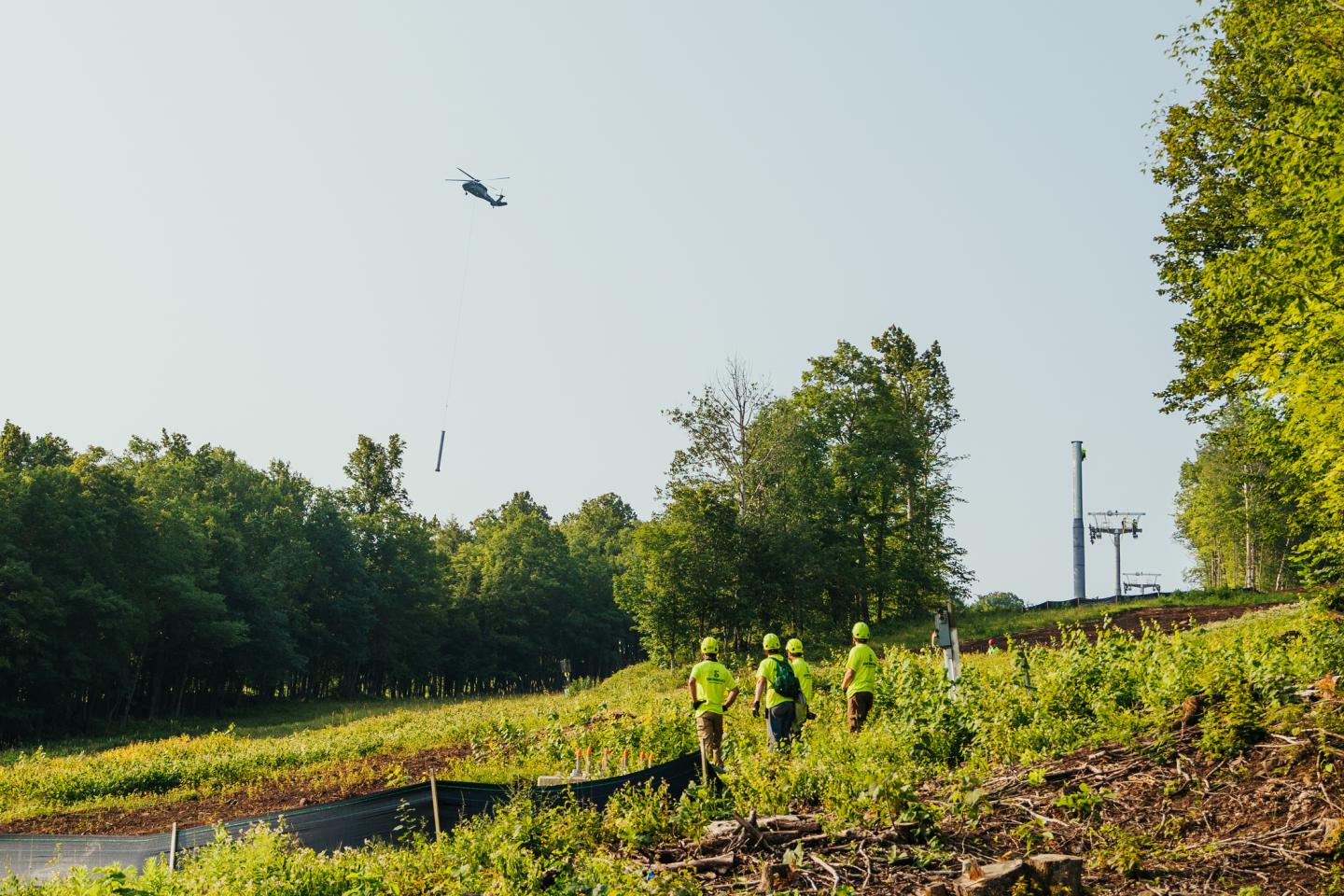
The first order of business for my crew was to place "bullets" on top of each of the anchor bolts. The bullets are bright orange, pointed caps that serve to guide the tower onto the bolts while protecting the threads and giving the pilot a clear visual of "home." With the bullets in place, our attention turned to the sky, where we watched for the tower heading our way. As the tower comes into position, I signaled for the pilot to lower it down to about waist height, where we could grab ahold and help guide it into position.
With a strong hold on the base of the tower, the pilot slowly lowers the tower down into position until he sees the orange shining through the bolt holes. As soon as he sees it line up, he drops it down into place and we spring into action spinning the softball-sized nuts into place. Once the nuts are hand-tight at 12, 3, 6, and 9 o'clock, we signal for the pilot to release his line and he heads back to the yard for the next piece of the puzzle.
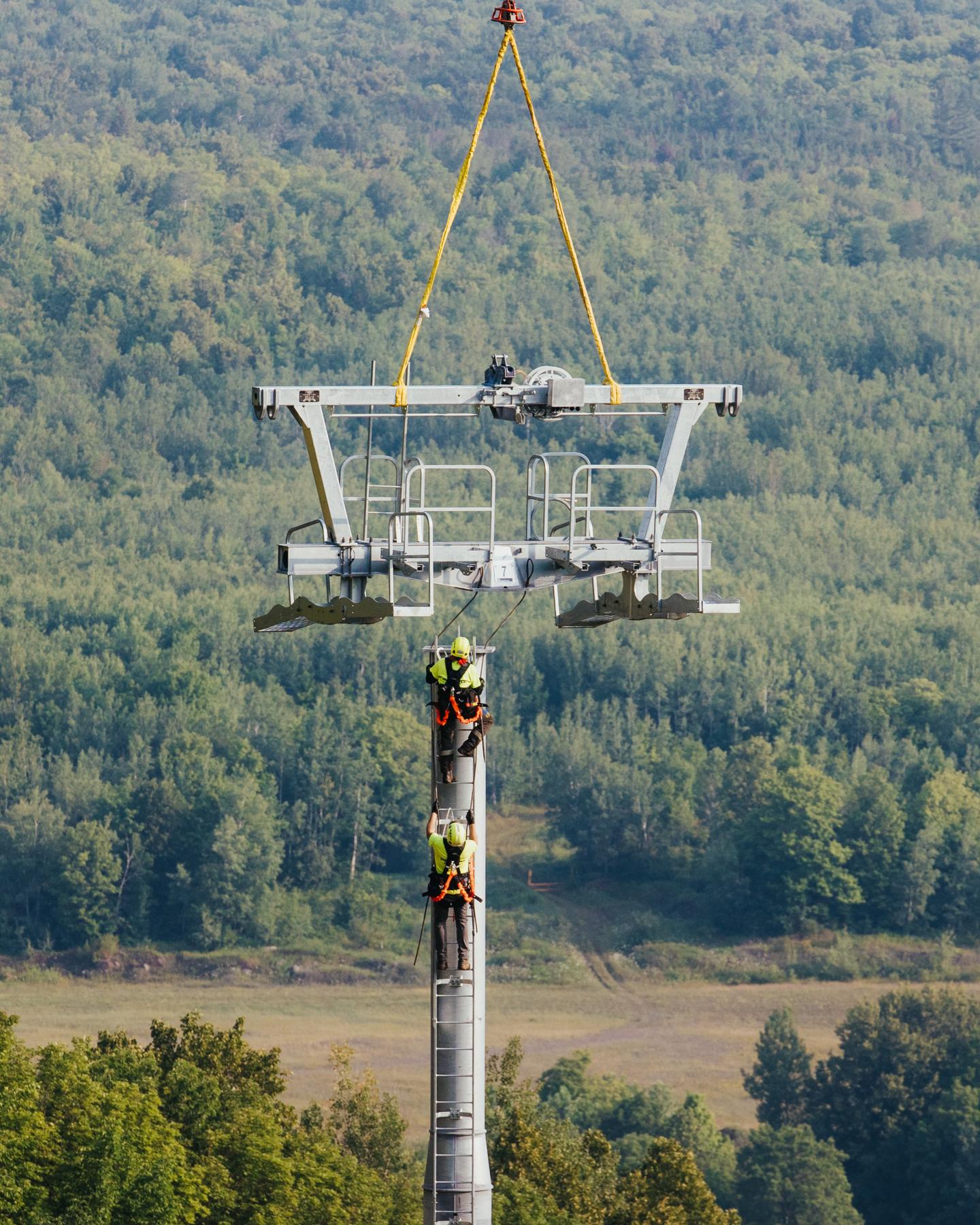
As soon as the nuts are tight, my crew runs to the next tower, while the tower team scampers up the ladder to receive the cross arm that's already in the air heading down the hill. Landing the cross arm is similar to the process for the tower tube, but instead of the orange bullets, two long cable "snakes" are used to align the cross arm. The snakes are 15-foot-long cables, threaded through two of the bolt holes on either side. As the pilot brings the cross arm into position, the person on the top feeds them down through the corresponding bolt holes on the tower tube.
Once through the holes, each person on the tower grabs a snake and pulls as hard as they can. The pilot can feel the tugging, signaling him to gently lower the cross arm into position. Once set, the top guy breaks free the bolts zip tied to the cross arm and quickly puts them into place so the heli can head back for its next load.

The final step in the process for each tower is to attach the sheave trains. Sheave trains are what we call the row of wheels that will eventually support the cable and chairs. As soon as the climbing crew gets the cross arm bolted down, they crawl up onto the catwalks to wait for the chopper. The brackets that attach the assembly to the cross arms are held open by custom spacers with an integrated set of handlebars.
As soon as the handlebars get within reach, the tower crew grabs ahold and slides them onto the square tube on the end of the cross arm. The helicopter gives it a quick pull towards the center of the tower before lowering the rigging down to release it. The process is then repeated on the other side. All in all, it takes less than 30 minutes to fully assemble each tower. Hard to beat that level of efficiency!
The lift is really starting to take shape! Next up, the terminals.
All the best,
Benjamin, GM
